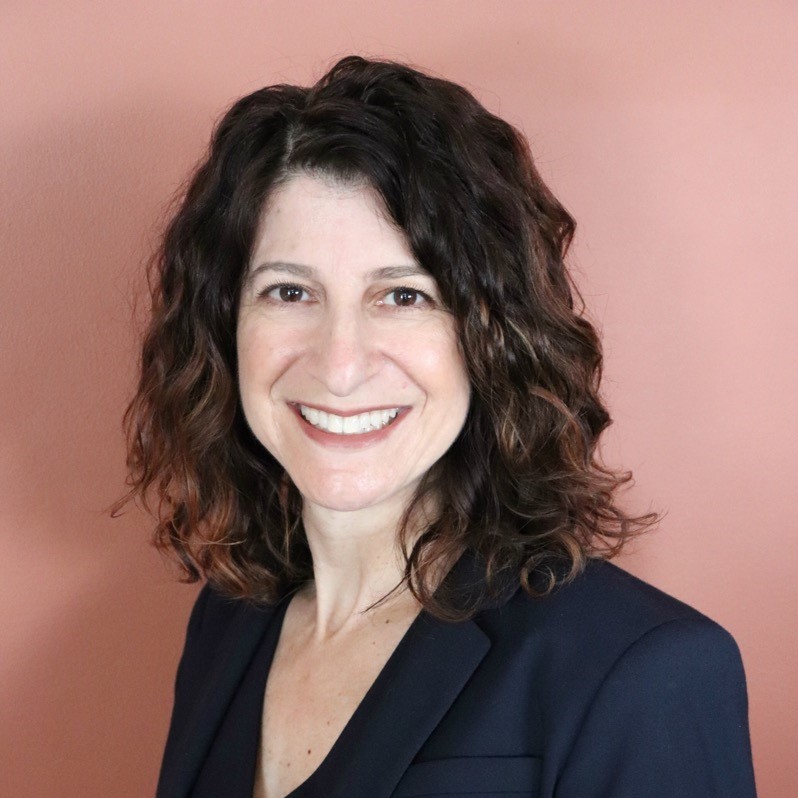Continuing Education
Night School 19
Connection Design: Tips, Tricks, and Lessons Learned
The first Night School course of 2019, Connection Design: Tips, Tricks, and Lessons Learned, tackles everything you need to know about steel connection details. Taught by five of our industry’s foremost experts, this course will provide instruction on the connection design process and the latest design methods. There will be a special focus on delegated design – not just “how to design it.” These eight sessions will cover what information to provide on construction documents and the complications that arise from insufficient information. The course starts with an overview of delegated connection design, and then proceeds to go in depth on the most useful connection types. The final session will be a rare opportunity to hear stories on lessons learned from the unmatched experience of our speakers. This course will provide instant benefit to you and your practice, whatever role you have in connection design.
- Date: 2/4/2019 to 4/8/2019
- Duration: 1.5 hours per session
- Location: Night School
- PDH Credits: 1.5 PDH per session (up to 12.0 PDH)
- Substitutions and Cancellations: Substitutions may be made at any time. Cancellations received 1-3 days prior to the webinar will be charged a $50 service charge. Cancellations and no shows the day of the webinar session will not receive a refund.
-
Connection Instructions: Upon registration, you will receive a confirmation email containing your receipt, a link to access the webinar, dial-in audio instructions, and a link to a PDF handout of slides.
Sessions
This session will focus on the responsibilities, relationships and communication among the various parties involved in the delegated design process. It will discuss how delegated connection design is addressed in the AISC Code of Standard Practice. Ways in which proper communication between the engineers can be maintained to ensure the safety of the structure while also addressing concerns about contract management will also be presented. Finally some general tips for those wishing to perform delegated connection design will be provided.
The cost of connections is a significant percentage of the total cost of steel-framed structures. This webinar reviews how designers can efficiently delegate connection design in a manner that saves time, reduces RFI’s, reduces cost, and conforms with the requirements of the Code of Standard Practice. This session discusses the EOR’s responsibility regarding delegation of connection design as stipulated by the COSP and reviews how decisions made relative to framing configuration during design can substantially affect connection cost. Tips, guidelines, suggestions, and examples will be presented to provide designers of all levels of experience a better understanding on how to properly delegate connection design in a manner that will result in safer, more constructable, and more economical steel-framed building structures.
Indisputably, beam end shear connections comprise the bulk of the total connections in a structural steel package. Connection designers have a plethora of options in regard to the type of shear connections to use. Magnitude of load, geometry, main member type, erection ease, shop schedule, and project specifications are just some of the considerations that impact the decision on the type of connection to use.
This presentation will present the information that a delegated connection designer will: (1) need to make an informed decision on connection type and design, and; (2) need to provide to the EoR to facilitate the review process.
Bolted or welded; should the EoR and delegated connection designer collaborate on this decision? Gravity or Lateral; does it make a difference in the design of the connections? Beam axial load equals transfer force; should it be obvious to the connection designer where, and for what magnitude, transfer forces are required in design?
This presentation will present the information that a delegated connection designer will: (1) need to in order to make an informed decision on connection type and design, and; (2) need to provide to the EoR to facilitate the review process.
Don’t waste time showing too much information that isn’t used or that can unnecessarily complicate your design. This session will include tips for successful delegated vertical bracing design and what information should be included on drawings, which will help you limit RFIs and resubmittals.
V- and inverted V-type braced frames are common brace configurations. Generally referred to as chevron systems, the configuration requires braces to frame to braced frame beams away from the beam-column joint. Typically, the effects of the brace forces on the beam and the impact on the beam end connections are overlooked. Standard practice in connection design is to assume that the joint is isolated from the frame, and to assume that the impact of the brace forces on the beam is isolated to the connection region. If the algebraic sum of the vertical components of the braces forces is zero, this assumption is generally valid. However, connection designers rarely deal with a zero summation of vertical force components. When the summation of the vertical components of the brace forces is non-zero, the location of the work point along the length of the beam and the span of the beam can significantly impact how beam shear and moment is distributed along the span of the beam, especially in the region of the connection. This is referred to as the chevron effect.
This webinar presents discussion on how brace forces are distributed through a chevron connection, and explores the impact of the brace forces on the design of the beam . Formulas are presented which allow the designer to determine if the Chevron Effect will impact the beam design.
From mechanistic design forces to critical welds to protected zones to prequalified connections to exceptions, the SEoR and delegated connection designer need to be in phase with one another before connection design begins. Documented communication on all aspects of the project between the SEoR, fabricator, erector, and inspector is paramount in order to avoid unwelcome shaking of project schedule and budget.
This presentation will present the information that a delegated connection designer will: (1) need to in order to make an informed decision on connection type and design, and; (2) need to provide to the EoR, fabricator, erector, and inspector to facilitate the review and quality processes.
In this session, the speakers will share stories, from their respective careers, that have shaped their views on how delegated connection design can be successfully implemented on structural steel projects.
Speakers

Patrick J. Fortney, PhD, PE
Dr. Patrick J. Fortney, P.E. has over 25 years of experience in the construction industry, and related areas in teaching, research, and practice.

Carol Drucker, PE, SE
Carol Drucker is Prinicpal of Drucker Zajdel Structural Engineers in Chicago, IL.

Clifford Schwinger
Clifford Schwinger, P.E. is a Vice President and Quality Assurance Manager at The Harman Group.

Larry S. Muir
Larry Muir is a structural steel consultant with more than two decades of engineering and structural steel fabrication experience.

William A. Thornton
William A. Thornton is Corporate Consultant and Vice President for Cives Engineering Corporation in Roswell, GA.
Registration
Price Info
| Individual Live Sessions |
$185 Member Prices are per webinar. Registration includes certificates for an unlimited number of people at one connection site. |
Register |
| 8-Session Package |
$500 Member Registration includes a certificate for the registrant only. |
Register |
| Substitutions and Cancellations |
Substitutions may be made at any time. Cancellations received 1-3 days prior to the webinar will be charged a $50 service charge. Cancellations and no shows the day of the webinar session will not receive a refund. |
PDH Credits
| Individual Live Sessions | 1.5 PDHs per webinar (up to 12.0 PDHs) to unlimited attendees at each connection |
| 8-Session Package | Up to 12.0 PDHs (1.5 PDHs per attended session) to the registrant only |
Attendance
| Individual Live Sessions | Live only |
| 8-Session Package | Watch sessions live or watch"make up" (recorded) sessions available online for four weeks after air date. Credit for recorded sessions is given only when quiz is passed. |
Quiz + Recording Access
| Individual Live Sessions | Not available |
| 8-Session Package | Available online for four weeks after air date. Access to quiz and recording available through MyAISC account. |
Certificate of Completion
| Individual Live Sessions | Not available |
| 8-Session Package | 1 EEU (Equivalent Education Unit), AISC's certificate of completion, for the registrant only. Eight session registrants who attend all sessions (live or recorded) and pass 7 of 8 quizzes and the final exam will be awarded 1.0 EEU. Earning an EEU is worth a maximum of 12 PDHs. |
Quiz and Attendance Records
Quiz Scores and Attendance
Quiz Answers
Quiz 1: 1. c, 2. a, 3. b, 4. a, 5. b, 6. b, 7. c, 8. c, 9. b, 10. c Quiz PDF
Quiz 2: 1. b, 2. a, 3. a, 4. d, 5. d, 6. a, 7. b, 8. d, 9. c, 10. b Quiz PDF
Quiz 3: 1. d. 2, b, 3. c, 4. b, 5. b, 6. c, 7. d, 8. b, 9. b, 10. a Quiz PDF
Quiz 4: 1. c, 2. c, 3. b, 4. b. 5. b, 6. c, 7. a, 8. d, 9. c, 10. c Quiz PDF
Quiz 5: 1. b, 2. d, 3. b, 4. b, 5. b, 6. c, 7. c, 8. d, 9. a, 10. b Quiz PDF
Quiz 6: 1. a, 2. a, 3. b, 4. b, 5. h, 6. a, 7. e, 8. d, 9. a, 10. b Quiz PDF
Quiz 7: 1. c, 2. b, 3. d, 4. c, 5. a, 6. b, 7. c, 8. a, 9. a, 10. c Quiz PDF
Quiz 8: 1. b, 2. b, 3. a, 4. c, 5. a, 6. b, 7. a, 8. c, 9. a, 10. c Quiz PDF
Final Exam: 1. c, 2. b, 3. c, 4. b, 5. c, 6. b, 7. c, 8. d, 9. a, 10. b, 11. d, 12. a, 13. b, 14. c, 15. c, 16. a, 17. b, 18. c, 19. b, 20. c, 21. a, 22. a, 23. c, 24. k Quiz PDF
